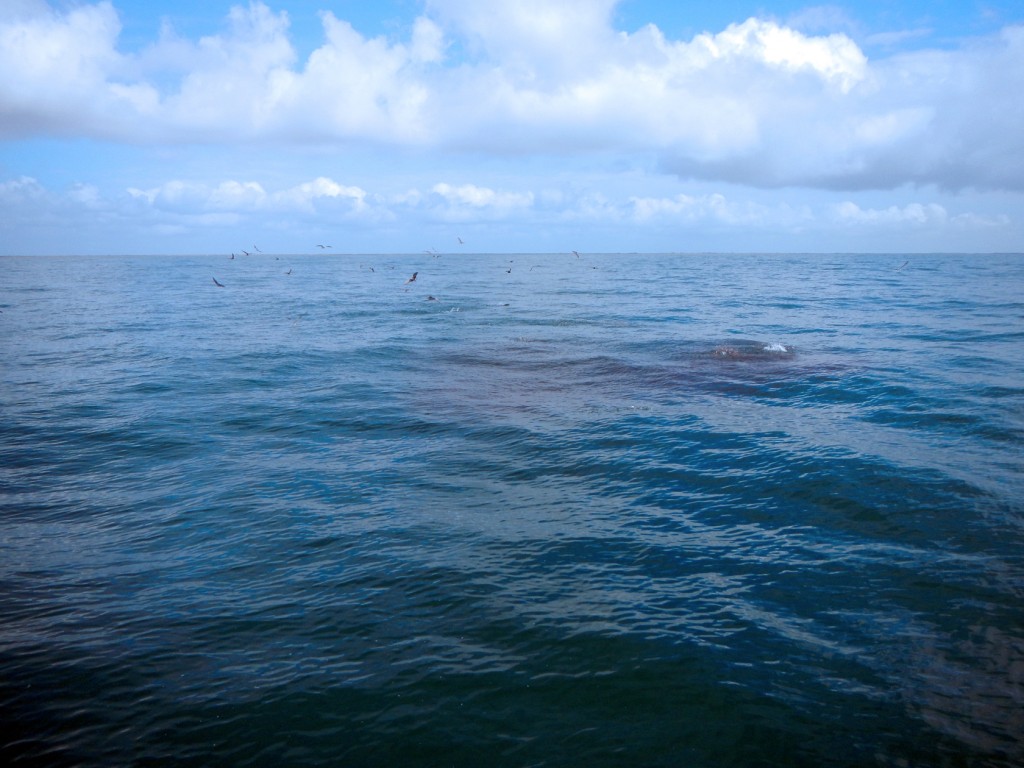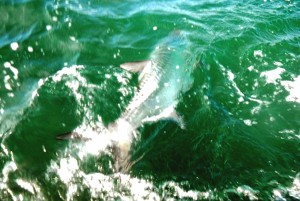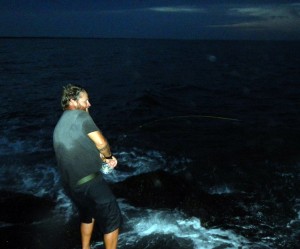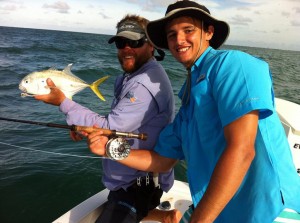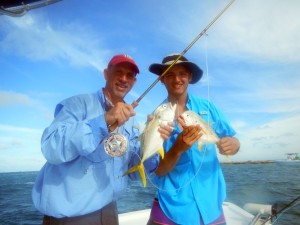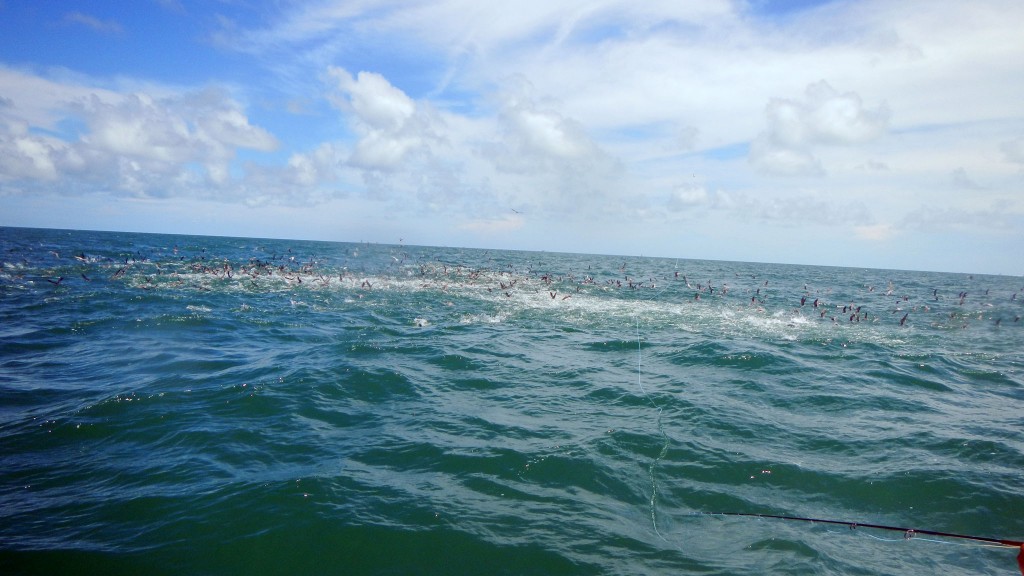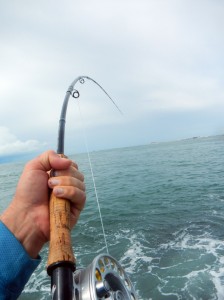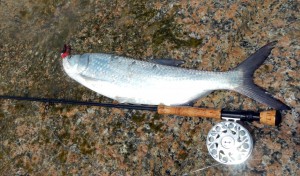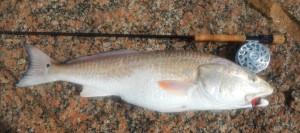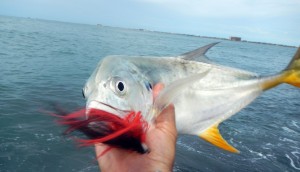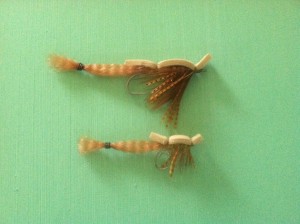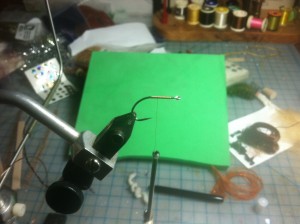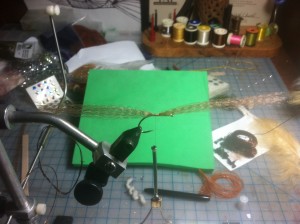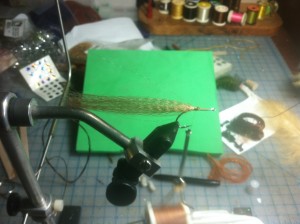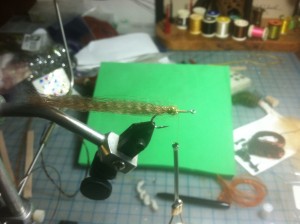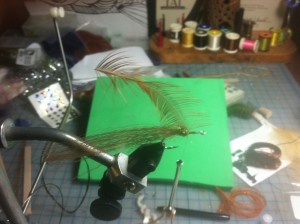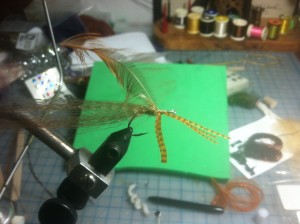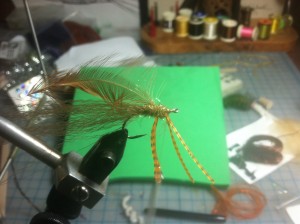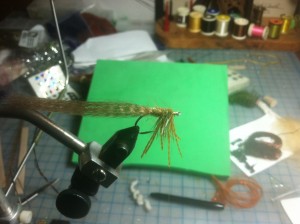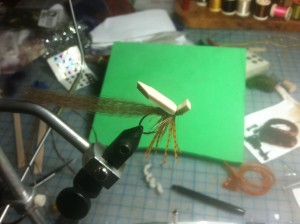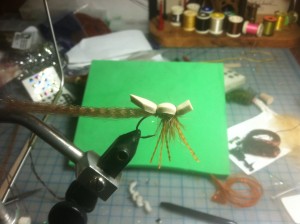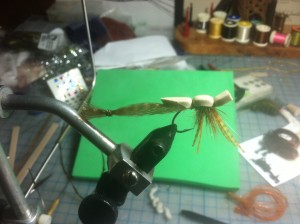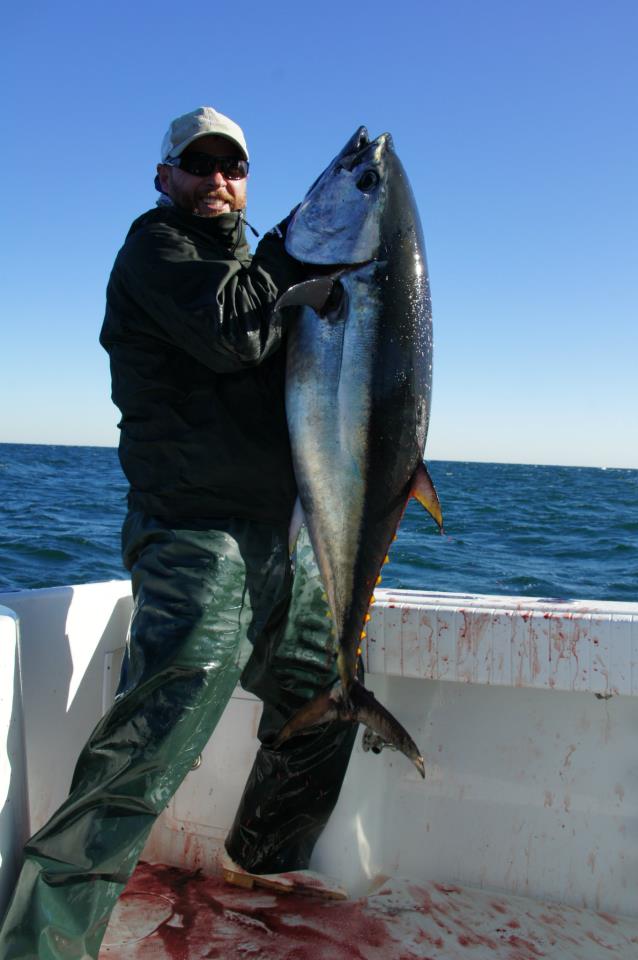A few hours before sunset the crew of 3 jumped out of the truck onto the hot sand and grabbing their gear suited up for some after-hours tarpon fly-fishing.
The usual sound of carbide tipped cleats scraping against the familiar yet awkward steps began to sing as we headed out onto the mass where so many animals live and call the underwater structures home.
“What fly to choose?” one of the fly fisherman asks himself out loud. He decides to limit himself to 5 casts per fly then change and repeat until something eats.
Intense anticipation builds as the flymen begin to search the depths, the action begins with the sights and sounds of a large tarpon breaching the water in an explosive manner and crashing back down into the darkening watery lair.
The excitement increases exponentially as we realize that one of us is connected to that fish which must have been 50+ inches.
We landed the fish and quickly released it for posterity (like the rest) but a quick scale sample was taken to give to the Marine Science Institute for age identification and year classification.
Over the next 4 hours, in the dark but under full moon, and with much surprise, we continue to hook, jump and release many highly respectable tarpon. On one occasion the three of us are connected to 3 healthy tarpon, a triple hookup!
During the melee, we had to jump over and crawl under each other several times to keep the fly lines tangle free and luckily all three tarpon were landed and released. One went 40 lbs, the other approximately 60 lbs and the third tarpon pushed close to 80lbs and over 5 feet. Very little time was spent to measure the fish’s length or even photograph the fish in order to reduce risk of mortality.
Another fish escaped when he cleared 80 feet of fly line and onto the reel in only 3 seconds when I realized the line was around my foot because these things happen at night too. I tried to clear the fly line but this massive 5-6 foot tarpon jumped for the third time and parted our way.
The final tally was 6 released between 40-80 pounds, and 20 others jumped with the largest being 100-lbs. At one moment, violent strikes from these hungry tarpon came on every 3rd cast. Now this is my kind of tarpon rodeo!
While it is exhilarating to jump any tarpon of any size during the daytime, it is absolutely thrilling to fish for big game species like the tarpon at night with minimal lighting. It is a spectacular experience and allows for the fisherman’s imagination to run wild, much like the tarpon who also swim wildly. It is also a crash course in honing one’s fly fishing senses.
The thrill is in the hunt, where a wide array of emotions are experienced. The satisfaction is in having a sense of relief once the fight is over and the fish swims away freely.
-Capt Ken
